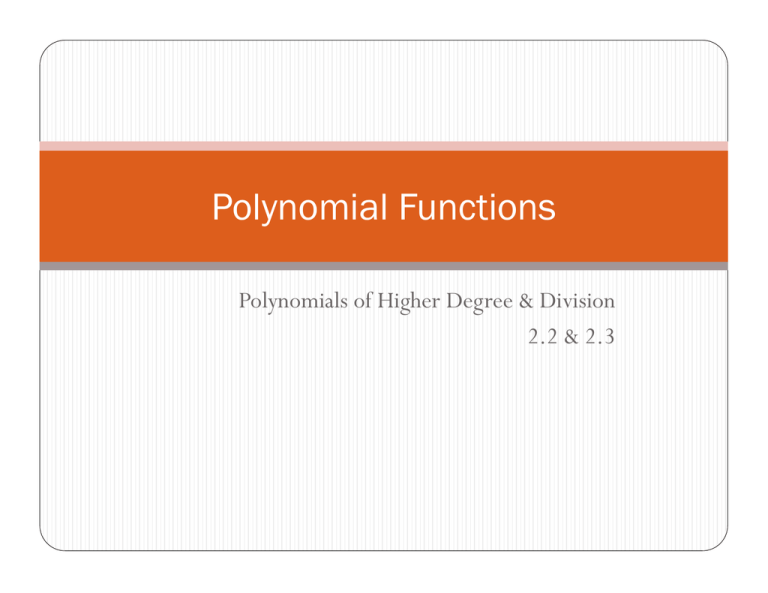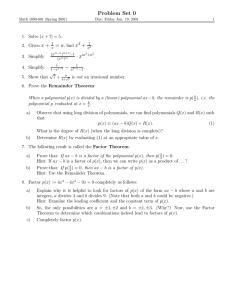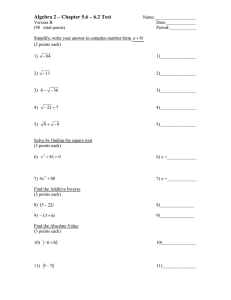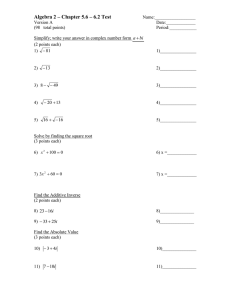Polynomial Functions Polynomials of Higher Degree & Division 2.2 & 2.3
advertisement

Polynomial Functions Polynomials of Higher Degree & Division 2.2 & 2.3 Polynomial Function Let a0, a1, a2, …, an-1, an be real numbers with an ≠ 0, f(x) = anxn + an-1xn-1 + … + a2x2 + a1x + a0 is a polynomial function of x with degree n. Polynomials are continuous with smooth rounded turns. Leading Coefficient Test (LCT) n even; an>0 n even; an<0 n odd; an>0 n odd; an<0 Real Zeros (Equivalent Statements) 1. x = a is a zero of the function f 2. x = a is a solution of the polynomial equation f(x) = 0 3. (x – a) is a factor of f(x) 4. (a, 0) is an x-intercept of the graph of f Note: A polynomial function of degree of n, has at most n real zeros and at most n-1 turning points. Repeat Roots (Zeros) A factor (x – a)k, k > 1 yield a repeated zero x = a of multiplicity of k. If k is odd, the graph crosses at x = a. If k is even, the graph touches the x-axis (but does not cross) at x = a. Intermediate Value Theorem (IVT) Let a and b be real numbers such that a < b. If f is a polynomial function such that f(a) ≠ f(b), then in the interval [a, b] f takes every value between f(a) and f(b). Factor Theorem: A polynomial f(x) has a factor (x – k) iif f(k)=0. Remainder Theorem: If a polynomial f(x) is divided by x – k, the remainder is r = f(k). Long Division always works! Synthetic Division works only if the divisor is the form (x – k)








